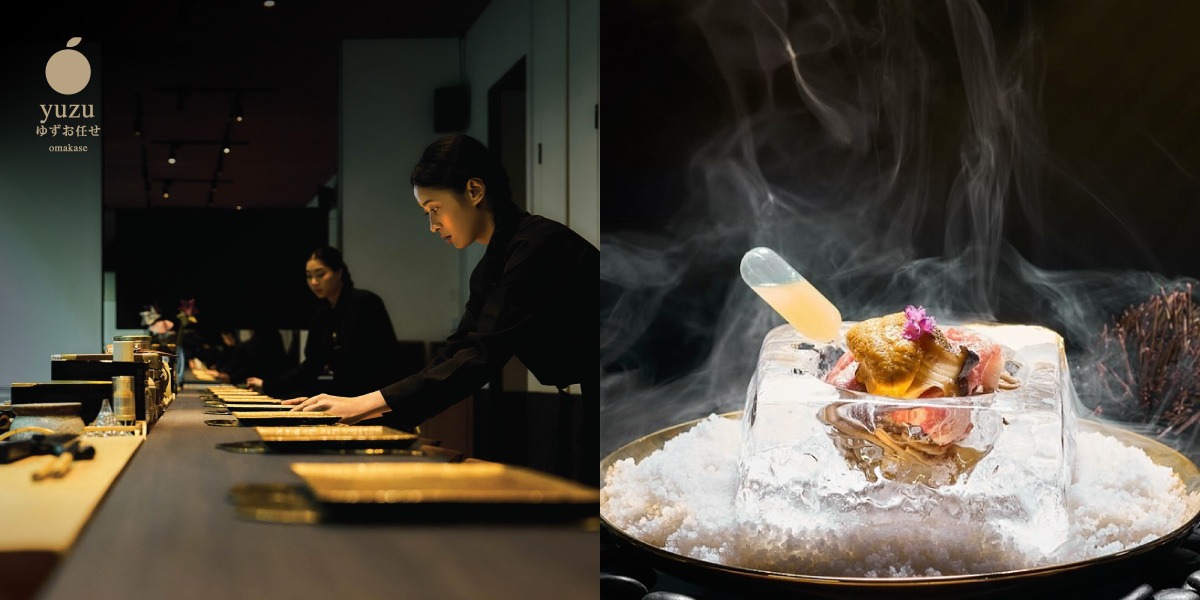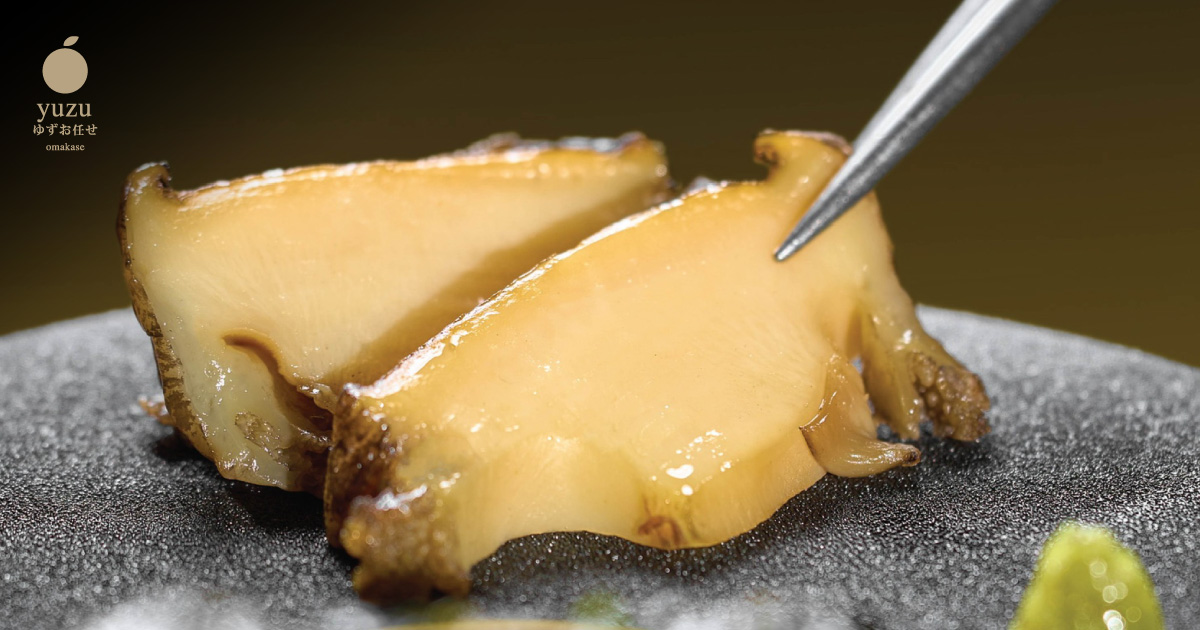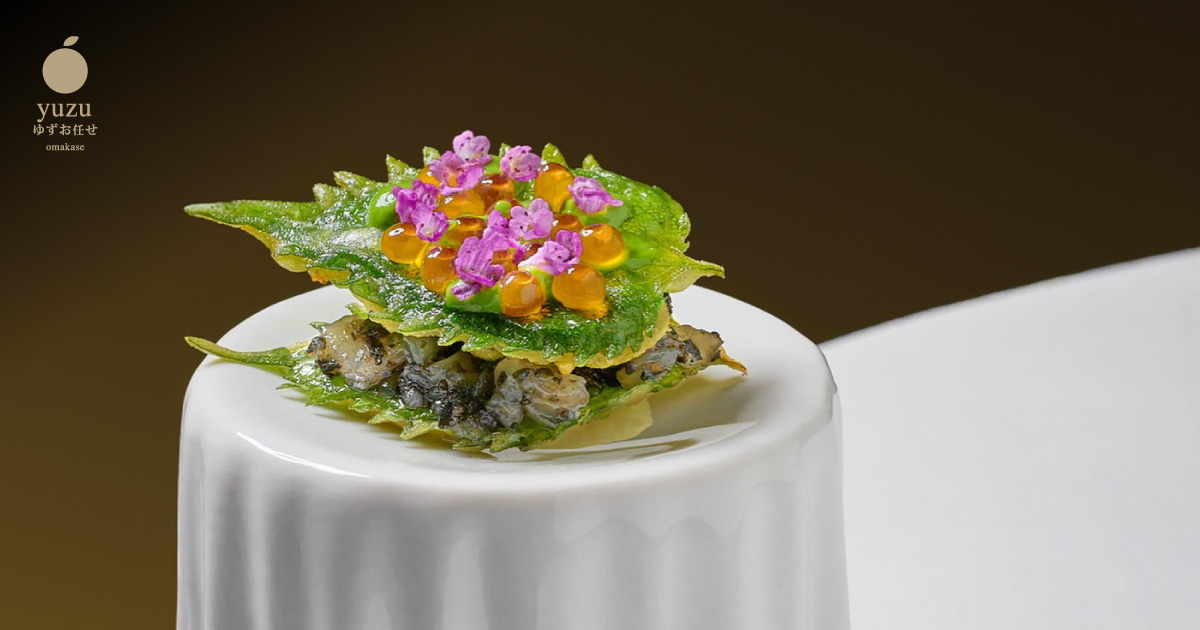
High-End Omakase Experience
Have you ever wondered what it feels like to surrender complete control of your dining experience to a master chef? Welcome to the world of high-end omakase, where culinary artistry meets personalized service in an unforgettable gastronomic journey. This isn’t just dinner – it’s a front-row seat to culinary theater at its finest. The high-end… Continue reading High-End Omakase Experience
Our Creations ● 2025 Oct 11

Have you ever wondered what it feels like to surrender complete control of your dining experience to a master chef? Welcome to the world of high-end omakase, where culinary artistry meets personalized service in an unforgettable gastronomic journey. This isn't just dinner – it's a front-row seat to culinary theater at its finest.
The high-end omakase experience represents the pinnacle of Japanese dining culture, where skilled chefs craft personalized tasting menus using the finest ingredients available. Think of it as the ultimate trust fall in the culinary world – you're placing your taste buds entirely in the hands of a master craftsperson who's dedicated their life to perfecting their art.

What is Omakase? Understanding the Art of Chef's Choice

Omakase, literally translated as "I'll leave it up to you" in Japanese, embodies a dining philosophy that goes far beyond simply ordering from a menu. It's a culinary conversation between chef and diner, where trust, expertise, and creativity converge to create something truly magical.
The Philosophy Behind Omakase

At its core, omakase represents the Japanese concept of omotenashi – exceptional hospitality that anticipates needs before they're expressed. When you choose omakase, you're not just selecting a meal; you're embarking on a curated journey designed specifically for you. The chef considers your preferences, the season's best offerings, and their own creative vision to craft an experience that's both personal and extraordinary.
This philosophy extends beyond food selection. It encompasses the entire dining experience – from the moment you're seated to your final bite. The chef reads your reactions, adjusts portions based on your appetite, and may even modify upcoming courses based on your responses to earlier dishes.

Traditional vs Modern Interpretations
Traditional omakase emerged from intimate sushi counters where regular customers would trust their favorite itamae (sushi chef) to serve them the day's best offerings. These experiences were deeply personal, built on relationships forged over countless visits.

Modern high-end omakase has evolved into something grander while maintaining those intimate roots. Today's premium establishments combine traditional techniques with innovative presentations, molecular gastronomy elements, and global influences. However, the best high-end omakase experiences never lose sight of the fundamental principle: the chef's expertise guiding your culinary journey.
The Evolution of High-End Omakase Dining

The transformation of omakase from neighborhood sushi counter tradition to global fine dining phenomenon is a testament to both its inherent appeal and the skill of the chefs who've elevated it.
From Humble Beginnings to Michelin Stars

Omakase's journey to fine dining prominence began in post-war Japan when skilled sushi chefs started gaining recognition for their artistry. What was once a practical solution for busy customers who trusted their regular chef's judgment evolved into a celebrated dining format.
The turning point came when international food critics and culinary enthusiasts discovered the depth and sophistication possible within the omakase format. Suddenly, these intimate chef-driven experiences were earning Michelin stars and international acclaim. Establishments like Sukiyabashi Jiro in Tokyo became legendary, not just for their food, but for demonstrating how omakase could represent the absolute pinnacle of culinary achievement.
Global Expansion and Cultural Adaptation

As omakase spread beyond Japan's borders, it underwent fascinating cultural adaptations while maintaining its essential character. High-end omakase restaurants in cities like New York, London, and Los Angeles began incorporating local ingredients and techniques while respecting traditional foundations.
This global expansion has created exciting fusion possibilities. You might experience omakase featuring locally-sourced American fish prepared with traditional Japanese techniques, or innovative presentations that would never appear in a traditional Tokyo establishment. Yet the best of these international omakase experiences maintain the core philosophy of chef-guided culinary storytelling.
What Makes a High-End Omakase Experience Special

The difference between a good sushi dinner and a transformative high-end omakase experience lies in the details – countless small elements that combine to create something greater than the sum of its parts.
Premium Ingredients and Sourcing

High-end omakase establishments spare no expense in sourcing the world's finest ingredients. We're talking about bluefin tuna flown in daily from Tokyo's Tsukiji market, sea urchin harvested from pristine waters, and rice varieties cultivated specifically for sushi preparation.
But it's not just about expensive ingredients – it's about the chef's relationships with suppliers, their understanding of seasonal peaks, and their ability to identify the perfect moment when each ingredient reaches its prime. A master omakase chef might reject a shipment of fish that would satisfy most restaurants because it doesn't meet their exacting standards.
The sourcing extends beyond the obvious stars. The soy sauce might be aged for years, the wasabi freshly grated from authentic Japanese horseradish, and even the water used for rice preparation carefully selected for its mineral content. Every element is chosen to contribute to the overall harmony of the experience.

The Chef-Diner Relationship
What sets high-end omakase apart from other fine dining experiences is the direct, personal connection between chef and diner. You're not just receiving food prepared by someone in a distant kitchen – you're engaging in a real-time collaboration with an artist.
Personalized Service Excellence
This relationship allows for unprecedented personalization. The chef observes your reactions, learns your preferences, and adjusts the experience accordingly. If you seem to particularly enjoy a certain type of fish, they might feature similar varieties later in the meal. If they notice you're getting full, they might modify portion sizes for remaining courses.

The best omakase chefs are part culinary artist, part psychologist. They read body language, engage in conversation when appropriate, and create an atmosphere where you feel both cared for and impressed. This isn't just service – it's hospitality elevated to an art form.

Interactive Culinary Theater
Seated at the sushi counter, you become part of the performance. You watch as the chef selects each piece of fish, prepares the rice to the perfect temperature, and applies just the right amount of wasabi. The precision of their movements, the respect they show for their ingredients, and the pride they take in their craft all contribute to the theater of the experience.

This interaction also provides educational value. Many omakase chefs share stories about their ingredients, explain their techniques, or discuss the reasoning behind their choices. You're not just eating; you're learning about culinary history, technique, and philosophy.
Essential Elements of Premium Omakase
Several key components distinguish truly exceptional high-end omakase experiences from more casual interpretations.
The Sushi Counter Experience
The sushi counter is the stage where omakase magic happens. Premium establishments invest heavily in creating the perfect environment – the right height for comfortable interaction, proper lighting to showcase the food's colors and textures, and materials that maintain ideal temperatures for fish and rice storage.
The counter also serves a practical purpose: it allows the chef to control timing perfectly. Each piece of sushi is served at the exact moment it reaches optimal temperature and texture. The rice is still slightly warm, the fish at its ideal serving temperature, and any sauce or garnish applied with precise timing.
Seasonal Menu Crafting
High-end omakase menus change constantly, driven by seasonal availability and the chef's creative inspiration. Spring might feature delicate white fish and vibrant vegetables, while winter showcases richer, more substantial offerings.
This seasonality isn't just about ingredient availability – it's about understanding how different flavors and textures complement the seasons. A skilled omakase chef considers not just what's available, but what will provide the most satisfying and harmonious experience for diners during each time of year.
Fresh Fish Selection Process

The fish selection process at high-end omakase establishments is incredibly rigorous. Chefs might visit fish markets before dawn, personally selecting each piece based on color, texture, smell, and even the way light reflects off the skin. They understand the subtle differences between fish from different regions, seasons, and even specific boats.
Many premium establishments maintain relationships with specific fishermen or suppliers, ensuring access to the best catches before they reach general markets. Some even age certain fish under controlled conditions to develop optimal flavors and textures.
Rice Preparation Mastery
While fish often gets the attention, rice is equally important in high-end omakase. The preparation begins hours before service, with precise temperature and timing control throughout the cooking process. The rice must be seasoned perfectly, maintained at body temperature, and have just the right texture – not too sticky, not too loose.
Different rice varieties might be used for different courses, and some establishments even adjust their rice preparation based on seasonal changes in humidity and temperature. This attention to detail ensures that each piece of sushi maintains perfect structural integrity while complementing rather than competing with the fish.
Top High-End Omakase Restaurants Worldwide

The global landscape of high-end omakase offers incredible diversity while maintaining the highest standards of quality and service.
Tokyo's Legendary Establishments
Tokyo remains the spiritual home of omakase, with establishments that have perfected their craft over generations. Places like Sukiyabashi Jiro have become synonymous with omakase excellence, while newer establishments push boundaries while respecting traditions.
Tokyo's omakase scene benefits from proximity to the world's largest fish market, centuries of culinary tradition, and a culture that deeply values craftsmanship and continuous improvement. Many of Tokyo's top omakase chefs trained under legendary masters, creating lineages of knowledge and technique that span generations.
New York's Premium Omakase Scene

New York has emerged as one of the world's premier omakase destinations outside Japan. The city's international nature has created unique opportunities for innovation while its demanding clientele ensures high standards.
New York omakase establishments often feature impressive fish sourcing operations, with some flying in ingredients daily from Japan while others focus on exceptional local and American products. The competitive nature of the city's dining scene has pushed chefs to create increasingly memorable and distinctive experiences.
Emerging Global Destinations

Cities around the world are developing their own high-end omakase scenes, each bringing local influences while respecting the format's essential character. London, Los Angeles, San Francisco, and even non-traditional markets are home to omakase experiences that rival the best establishments anywhere.
These emerging destinations often offer unique perspectives on omakase, incorporating local ingredients, techniques, or cultural elements that create distinctive experiences impossible to find elsewhere.
What to Expect During Your High-End Omakase Experience
Understanding what to expect can help you fully appreciate and enjoy your high-end omakase experience.
The Reservation Process

Securing reservations at top omakase establishments often requires significant advance planning. Some restaurants release reservations months in advance, while others use waiting lists or require personal connections.
The reservation process itself often includes questions about dietary restrictions, special occasions, and previous omakase experience. This information helps the chef prepare for your visit and customize the experience appropriately.
Dress Code and Etiquette
High-end omakase establishments typically maintain dress codes that reflect the formality and respect due to the experience. While specific requirements vary, most expect business casual or formal attire that shows respect for the chef, other diners, and the experience itself.
Proper Omakase Dining Manners
Omakase etiquette balances respect for tradition with enjoyment of the experience. Key points include eating each piece shortly after it's served, avoiding excessive soy sauce use (the chef has already seasoned each piece appropriately), and engaging appropriately with the chef without disrupting their workflow.
Photography policies vary, but many high-end establishments prefer minimal or no photography to maintain the intimate atmosphere and respect other diners' privacy.
The Cost Factor: Understanding Omakase Pricing
High-end omakase experiences command premium prices, and understanding the value proposition helps diners appreciate what they're receiving.
Why High-End Omakase Commands Premium Prices

The pricing reflects numerous factors: exceptional ingredient costs, intensive labor requirements, limited seating capacity, extensive chef training, and the personalized nature of the service. When you consider that some establishments serve only 10-15 diners per evening, with each receiving individual attention from a master chef, the economics become clearer.
Value Proposition Analysis
While expensive, high-end omakase offers unique value that's difficult to quantify purely in terms of food cost. You're paying for expertise, experience, personalization, and access to ingredients and preparations unavailable elsewhere. The memories and knowledge gained often prove more valuable than the immediate culinary pleasure.
Preparing for Your First High-End Omakase
Proper preparation enhances your omakase experience and shows respect for the establishment and chef.
Research and Expectations
Learning about the restaurant's style, chef's background, and general approach helps set appropriate expectations. Some omakase experiences are traditional and formal, while others are more innovative and casual. Understanding what to expect helps you appreciate the experience more fully.
Dietary Restrictions and Communication
Communicating dietary restrictions during the reservation process is crucial. High-end omakase chefs are typically accommodating and creative in working around limitations while maintaining the integrity of the experience. However, they need advance notice to plan appropriately.

The Future of High-End Omakase Dining
The omakase format continues evolving while maintaining its essential character. Technology is beginning to play a role in sourcing and preparation, while sustainability concerns are influencing ingredient choices. However, the core elements – personal interaction, seasonal ingredients, and chef expertise – remain constant.
Climate change and overfishing present challenges that forward-thinking omakase establishments are addressing through sustainable sourcing practices and alternative protein exploration. The best chefs are finding ways to maintain quality while taking responsibility for environmental impact.

The high-end omakase experience represents the pinnacle of personalized dining, where culinary artistry, premium ingredients, and exceptional service combine to create unforgettable memories. It's more than a meal – it's a journey guided by masters of their craft who've dedicated their lives to perfection.
Whether you're drawn by the promise of exceptional sushi, the allure of personalized service, or simple curiosity about this celebrated dining format, a high-end omakase experience offers rewards that extend far beyond the final bite. It's an investment in culinary education, cultural appreciation, and pure gastronomic pleasure that creates memories lasting long after the evening ends.
The world of high-end omakase continues expanding and evolving, offering new opportunities to experience this unique dining format. As more chefs embrace the omakase philosophy and bring their own interpretations to this traditional format, diners have unprecedented access to these transformative culinary experiences.
Frequently Asked Questions
1. How much should I expect to spend on a high-end omakase experience? High-end omakase experiences typically range from $200 to $600 per person, with the most prestigious establishments potentially exceeding $800. Pricing depends on the restaurant's reputation, ingredient quality, location, and the number of courses served. Additional costs may include beverages, tax, and gratuity.
2. How far in advance should I make reservations for premium omakase restaurants? Reservation timing varies significantly by restaurant. Popular establishments may require 2-3 months advance booking, while some ultra-exclusive venues use waiting lists that can extend even longer. Less established but still high-quality restaurants might accept reservations 2-4 weeks in advance. It's best to check each restaurant's specific policy.
3. What should I wear to a high-end omakase restaurant? Most high-end omakase establishments expect business casual to formal attire. Men typically wear collared shirts and dress pants or suits, while women choose elegant dresses, blouses with dress pants, or business suits. Avoid overly casual clothing like shorts, flip-flops, or athletic wear. When in doubt, err on the side of being overdressed.
4. Can vegetarians or people with food allergies enjoy omakase experiences? Many high-end omakase restaurants can accommodate dietary restrictions with advance notice. Some establishments offer vegetarian omakase menus featuring seasonal vegetables, while others can work around specific allergies. However, communication during the reservation process is essential, as some restaurants may have limited flexibility with certain restrictions.
5. How long does a typical high-end omakase meal last? High-end omakase experiences typically last 1.5 to 3 hours, depending on the number of courses and the chef's pacing. The meal progresses at a leisurely pace designed to allow full appreciation of each course. Factor in additional time for arrival, settling in, and post-meal conversation, as rushing through the experience defeats its purpose.
RELATE
-
Best Omakase in Bangkok for Date Night: Why Yuzu Omakase?
Yuzu Omakase offers an enchanting setting for a romantic evening with its intimate atmosphere, exquisite cuisine, and impeccable service Yuzu Omakase in Bangkok’s Siam Square. The restaurant combines minimalist Japanese elegance with personalized chef experiences, creating the perfect backdrop for special moments. Key Highlights for Romantic Dining What Makes Omakase Perfect for Date Night? Omakase… Continue reading Best Omakase in Bangkok for Date Night: Why Yuzu Omakase?
Our Creations ● 2025 Dec 4
-
Beyond Sushi: Seasonal Ingredients You’ll Find in Bangkok’s Omakase
Bangkok’s culinary landscape has evolved dramatically over the past decade, and nowhere is this more evident than in the city’s flourishing omakase scene. While many diners associate Japanese cuisine with simple sushi rolls, Bangkok’s high-end omakase restaurants offer something far more sophisticated: a curated journey through seasonal ingredients that showcase the chef’s artistry and the… Continue reading Beyond Sushi: Seasonal Ingredients You’ll Find in Bangkok’s Omakase
Our Creations ● 2025 Oct 10
-
Multi-Sensory Dining: Ambiance Lighting and Flavor Fusion at Omakase Siam Square
At Yuzu Omakase Thailand, every detail—from the flicker of a candle to the tempo of a playlist—is orchestrated to immerse guests in a complete sensory experience. This is not just dining; it’s a meditation in flavor, light, and emotion.
Our Creations ● 2025 Aug 20
-
Chef Specials Spotlight: Premium Dining with a Personal Touch at Yuzu Omakase
At Yuzu Omakase Thailand, luxury dining is alive with spontaneity. Each day brings a new series of chef specials—exclusive creations crafted from rare ingredients and seasonal inspiration. For diners seeking more than a menu, this is where omakase becomes truly personal. Omakase, by definition, means “I leave it up to you.” But at Yuzu Omakase… Continue reading Chef Specials Spotlight: Premium Dining with a Personal Touch at Yuzu Omakase
Our Creations ● 2025 Aug 19







